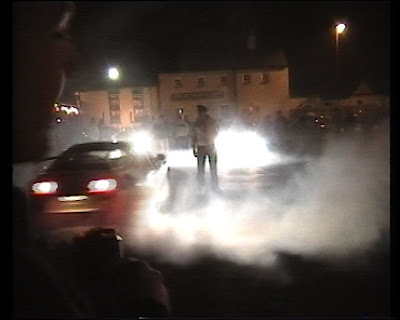Press Release 7/2010
Tears, Trash and Decay is an exhibition by three Irish artists, Harry Moore, Sarah Iremonger, Marianne Keating and Australian artist Sarah Catherall at Yarra Sculpture Space in Victoria, Australia August 5th –15th 2010.
The exhibition explores our relationship with our environment from four different perspectives, each artist using their distinctly differing practices to articulate their specific concerns and outlooks. The grouping of four artists who work and function in different media articulates the complexity of the issues we face whilst providing a rich and broad experience in a single show of works.
Harry Moore uses pinhole photography to record an eerie shadow world, another reality which we can only gain a glimpse of. These images, from the series “Ghosts in our Machine”, are printed onto large canvas, up to 3m X 4.25m and displayed in a coral style creating a kaleidoscopic landscape for the viewer to observe and almost enter into.
The idea of fragmented realities is explored through the installation by Sarah Iremonger of 2,000 badges adhered directly onto the wall of the gallery, each badge is made from an individual photograph is bagged and labeled ‘I thought I dreamed of you’ evoking the idea of a personal keepsake with mass production undertones. ‘Upside-down Vista’ is a painted mural which will also be installed directly onto the wall of the gallery, the drawing for this piece is developed from a photograph of Mizen Head in West Cork and literally turns on its head the idea of an idealized landscape view.
Marianne Keating has developed a body of work that is an exploration of the individual and their perceptions of reality, focusing on how recurring motifs of the outside world may alter and impact on preconceived ideas. Through the printing of wall-paper which uses bugs instead of flowers to create their pattern Marianne undermines the viewers idea of what is expected.
Sarah Catherall is an emerging Australian artist who works in various mediums - including performance, installation and sculpture. Her work focuses on the ideas of identity, often using her body as a tool for introspection. For this exhibition she has chosen to work with a combination of found and everyday objects that have been affected by the process of rust. The materials for this work have been specifically chosen for their aesthetic and metaphoric qualities.
The Irish artists have undertaken to occupy the vast space Yarra Sculpture Space for 10 days, to establish a working relationship with Sarah Catherall and to allow a snapshot of contemporary Irish art to be encountered in Australia.
This exhibition is part of a series of exchanges, residencies and exhibitions, which has been developing over the last two years to establish an Irish presence in this part of Australia. It follows from a similar event when Australian artists, Julie Collins and Derek John working together as DJ Projects, attended a residency in Ireland, showing their work in Cork and Tralee and interacting with local artists and organisations. Their exhibitions and project “Shared Journey” at the National Sculpture Factory in Cork made a profound impact on local artists and this exhibition is a great opportunity to develop those connections. “The interest in Irish culture in Australia is legendary and the exhibition, Tears Trash and Decay is a great opportunity for Irish artists to establish real links with the contemporary Australian art world and market,” said visiting artist Sarah Iremonger.
Each artist has been invited to give talks at the Art Department of Ballarat University in Victoria, developing an ongoing relationship.
Thanks to Culture Ireland and Yarra Sculpture Space














































